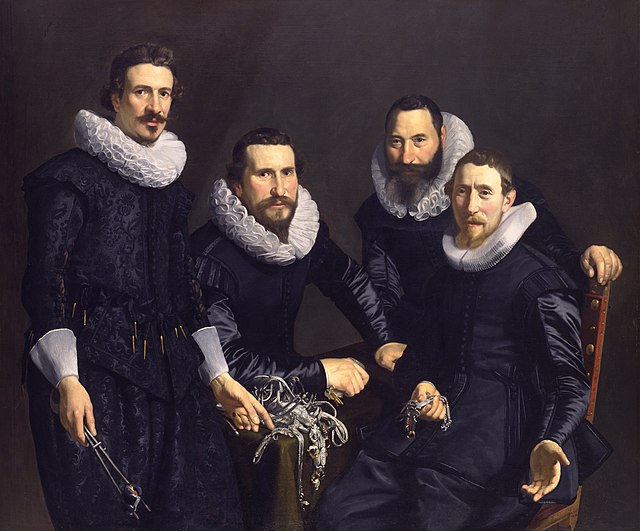The following is a timeline of the history of the municipality of Amsterdam, Netherlands.
People celebrating the liberation of the Netherlands at the end of World War II on 8 May 1945.
Protest against the Vietnam War in Amsterdam, April 1968
Portrait of the syndics of the Amsterdam Goldsmiths Guild, established in 1601 (painting from 1627)
Amsterdam Guild of Surgeons anatomy lesson on 31 January 1632
Amsterdam has a long and eventful history. The origins of the city lie in the 12th century, when fishermen living along the banks of the River Amstel built a bridge across the waterway near the IJ, which at the time was a large saltwater inlet. Wooden locks under the bridge served as a dam protecting the village from the rising IJ waters, which often flooded the early settlement. The mouth of the river Amstel, where the Damrak is now, formed a natural harbor, which became important for trading-exchange from the larger koggeships into the smaller ships that sailed the merchandise deeper into the hinterland.
Amsterdam around 1662. The ring of canals is now complete.
Amsterdam and surroundings around 1770. The expansion has come to a standstill.
The Gift Letter of 1275, Toll-privilege
Het Houten Huys, Begijnhof - a rare wooden house from before the fire of 1452








